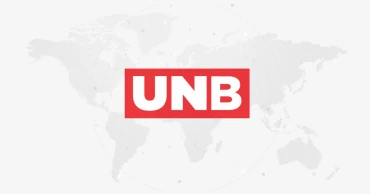lower revenue-GDP ratio
Bangladesh performing well in fulfilling SDGs, but many challenges ahead
Although Bangladesh is on track and performing well in achieving many of the UN-adopted Sustainable Development Goals (SDGs) in time, it still faces the challenges of low external resources and lack of global partnership apart from lower revenue-GDP ratio.
Achieving SDGs will critically depend on the availability of resources including external resources and global partnership, according to an official document collected by UNB.
The United Nations adopted the SDGs in 2015 with a global call of action on 17 integrated goals with a pledge to end poverty, protect the earth’s environment and climate and ensure peace and prosperity for people everywhere by 2030.
Read: Hasina receives SDGs Progress Award
Bangladesh’s performance has so far been commendable in various fields, including poverty reduction, gender equality, child and maternal mortality, nutrition, sanitation, electricity, annual GDP growth and disaster management.
But it has to overcome a number of the hurdles to further improve its performance, the document observes.
“Government revenue as a proportion of GDP needs to be substantially increased through undertaking measures for increasing the number of taxpayers and improving tax collection and management mechanism,” it says.
The document calls for a substantial increase in inflow of FDI and remittance for achieving of the the goals.
Read KOICA to help generate statistics to indicate progress on SDGs
According to official data, the tax to GDP ratio of the country has been 9.9 per cent on an average since 2015-2019, while it is 19.8 per cent for India, 23.9 per cent for Nepal, 14.7 per cent for Pakistan, 13.5 per cent for Sri Lanka.
The ratio is 25.6 per cent for developing countries and 35.9 per cent for developed countries, according to the data.
Read UNDP launches Accelerator Lab in Bangladesh to support SDGs
The tax-to-GDP ratio is a ratio of a nation's tax revenue relative to its gross domestic product, the value of goods and services produced in a country during a certain period. The ratio is also a marker of how well the government controls a country's economic resources.
The document says that Bangladesh has undertaken a comprehensive strategy and actions to effectively internalise Sustainable Development Goals. The 7th Five Year Plan incorporated 82 per cent of sustainable development targets. As a result, the country is well on track in achieving SDGs.
Out of 17 SDGs, Bangladesh has made considerable progress in reducing poverty. In 2019, the proportion of population living below the international poverty line (absolute poverty measured by USD 1.90 per day) was 10.5 per cent.
Read: Hasina seeks SDGs roadmap for countries falling behind
4 years ago

